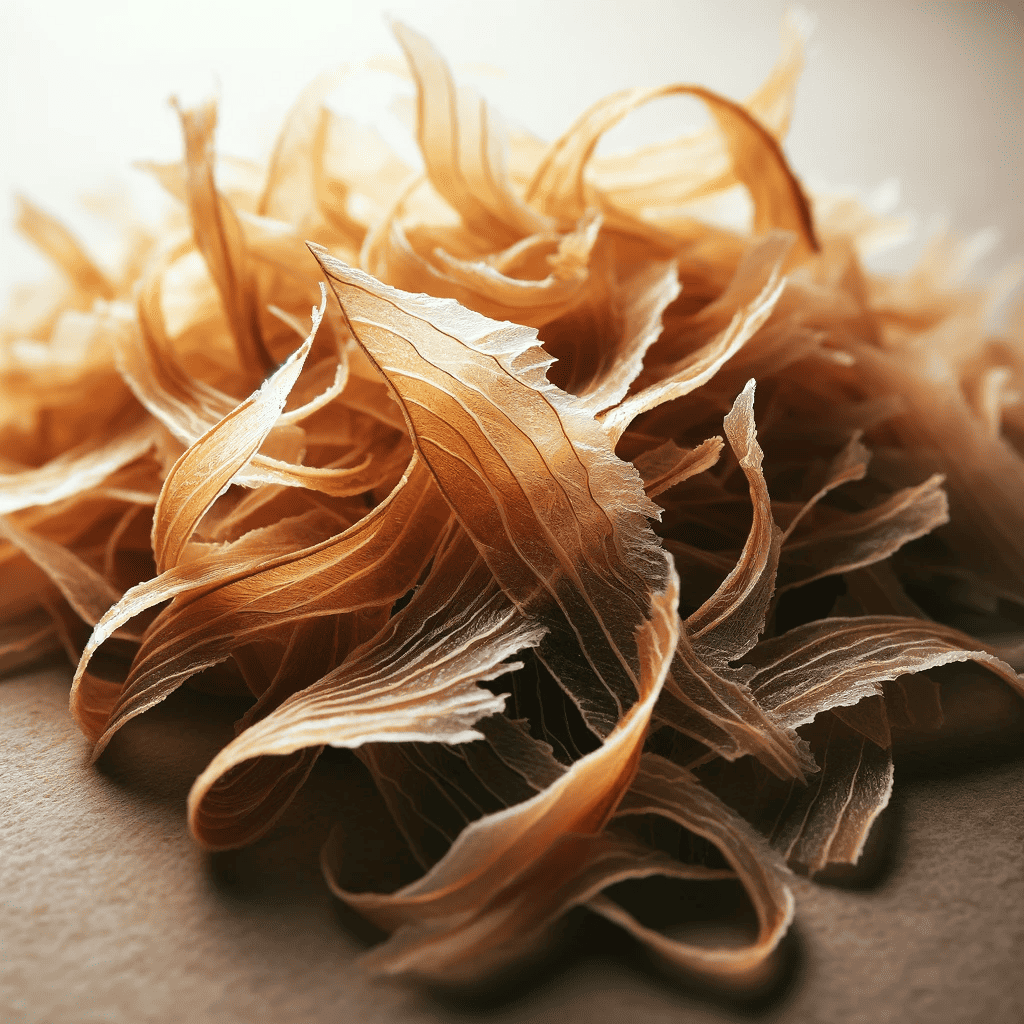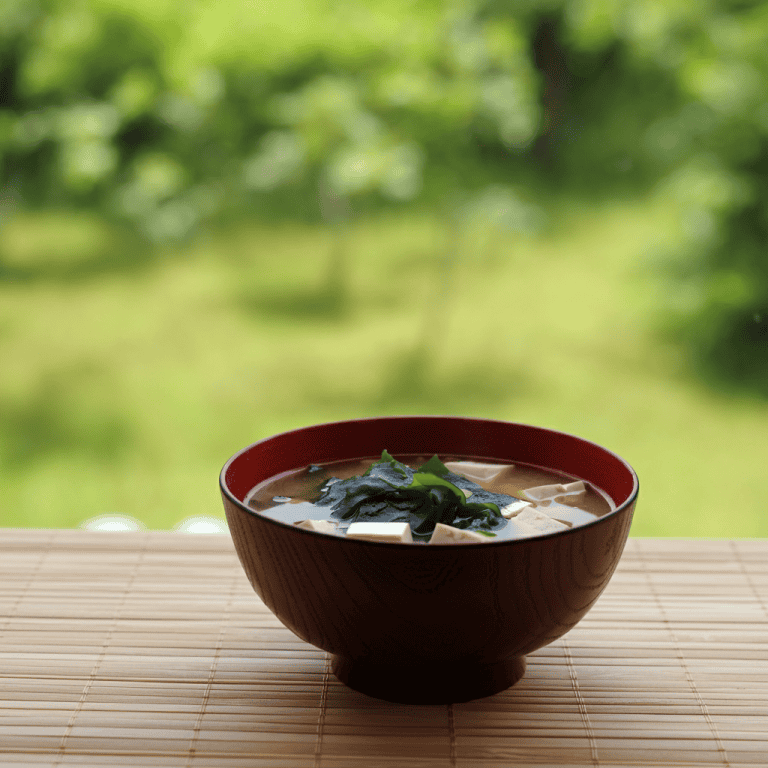Dashi: The Secret to Miso Soup with Instant Dashi Flavor
There’s nothing like warm miso soup on a cold day. But what do you do if you don’t have the time to make it from scratch? Try using an instant miso soup mix with dashi! Dashi is a type of broth that is made from kombu (seaweed) and katsuobushi (dried, smoked fish). It’s incredibly flavorful and can be used in many different dishes. In this blog post, we will discuss the benefits of dashi and show you how to make miso soup with instant dashi.
Miso soup with instant dashi

A common misconception is that making miso soup only requires adding miso paste to hot water. However, if you follow this method expecting delicious and rich flavor, you will likely be disappointed. Because a good miso soup needs dashi. Miso paste is half of the equation, dashi plays the other half or even more part of the final product.
How to make a miso soup with instant dashi
You can buy dashi powder at most Asian markets. Go to the condiment aisle, you will find a variety of dashi stock in powder or other forms.
What Kind of instant dashi is available in the market?
Here are the traditional and popular dashi types. You can use a single dashi type or you can mix multiple dashi to create complex flavors.
Dashi from Bonito flakes

Bonito flakes dashi is a type of broth that is made from katsuobushi (dried, smoked fish).
Dashi from Kelp (kombu) Seaweed
Have you ever tried kombu dashi? It’s a type of broth made from kombu, or Japanese seaweed. It has an umami (savory) flavor and is often used in miso soup. What sets kombu dashi apart from other broths is its distinct umami flavor. This savory taste comes from kombu’s high levels of glutamate, an amino acid often found in meat and vegetables. Kombu dashi is commonly used as a base for miso soup, but it can also add depth to any dish that calls for broth or stock.

Dashi from Niboshi (dried small sardines)
Niboshi dashi is made from dried small sardines. It has a strong fishy flavor and is often used in stews or noodle dishes. If you’re a fan of noodle soups and stews, chances are you’ve come across niboshi dashi before. This savory broth is made from dried small sardines, giving it a strong fishy flavor that adds depth to various dishes. One of the most popular uses for this type of dashi is in a traditional wintertime dish called oden, where vegetables, fish cakes, and hard boiled eggs are simmered in the soup until they soak up all that rich flavor. It’s also often used as the base for udon or soba noodle soups, adding a distinctive savory touch to otherwise simple dishes. So next time you have a craving for something warm and comforting, try using niboshi dashi as your secret ingredient for an added burst of umami flavor.
Dashi from Shiitake mushrooms
Shiitake mushroom dashi is a type of broth commonly used in Japanese cuisine. It’s made by simmering shiitake mushrooms in water for several hours, allowing the flavors and umami richness of the shiitakes to infuse into the liquid. The resulting broth can be used as a base for soups and stews, or as a flavor enhancer for various dishes. In addition to its delicious taste, shiitake dashi also boasts numerous health benefits, including boosting immune function and aiding in digestion. Shiitake dashi powder can be purchased at most Asian markets and easily reconstituted with hot water. Add some shiitake dashi to your next meal and enjoy its savory flavor and healthful properties.
Dashi from dried anchovies
It is also called “Iriko dashi.” While it is not a common type of dashi source in typical Japanese cuisine. Anchovies can also be used to make dashi with a distinct umami flavor. Dried anchovy dashi is commonly used in Korean cooking as well, forming the base for soups and sauces. To make anchovy dashi, place dried anchovies in water and simmer over low heat for about half an hour. The anchovies will dissolve into the water, infusing it with their rich flavor. Strain the liquid before use, discarding the anchovies’ bones and heads. This type of dashi pairs well with pungent ingredients such as garlic and fermented foods. Next time you’re in need of a delicious broth or stock, try out anchovy dashi for a unique twist on traditional dashi.
While one type is more common and popular than others, you should be able to find the instant versions of the dashi we described here.
The history of miso soup and its popularity today
Miso soup is a staple of Japanese cuisine, enjoyed by people of all ages. It’s simple to make and can be made with a variety of different ingredients. The soup has a long history, dating back to the Heian period (794-1185). At that time, miso was used as a currency and was only eaten by the upper class. It wasn’t until the Kamakura period (1185-1333) that miso soup became more accessible to the masses. The soup gained popularity because it was an easy and nutritious way to get your miso fix. Today, miso soup is enjoyed by people worldwide and is a staple of Japanese cuisine.

What is dashi, and what are its benefits?
Dashi, sometimes called dashi stock, is a type of broth that is made from kombu (seaweed) and katsuobushi (dried, smoked fish). It’s incredibly flavorful and can be used in many different dishes. Dashi is a very critical part of Japanese cooking. Learning Japanese cooking is learning how to use dashi and other ingredients with it. Let’s explore the benefits of dashi and show you how to make miso soup.
Dashi is the key to flavor in miso soup
If you’ve ever had miso soup at a Japanese restaurant, you know that it has a rich and savory flavor that is unlike any other soup. This unique flavor comes from dashi stock, which is a type of broth made from kombu (seaweed) and katsuobushi (dried, smoked fish). When the dashi is mixed with miso paste, we can create a super flavorful miso soup. The combination of dashi and miso paste creates a wide varies of miso soups that you can enjoy in different places and regions in Japanese and other parts of the world
How to store instant dashi?
Unlike miso paste, almost all instant dashi comes in powder form. and it is very receptive to humidity.
Some product comes as a resealable pouch, others individually packed, or in a bottle. If they are in power form. it is the best to keep in cool and dry place. Avoid heat and humidity. They tend to dissolve and form a block easily.
Conclusion
Instant miso soup is a quick and easy meal that can be made with just a few simple ingredients. The dashi in miso soup gives it its unique and delicious flavor, which is why it’s such a popular dish in Japanese cuisine. In this blog post, we’ve shown you how to make miso soup with instant dashi. We’ve also discussed the benefits of dashi and shared some tips on how to store instant dashi powder. With just a little bit of preparation, you can enjoy a warm and satisfying bowl of miso soup any time you want.



